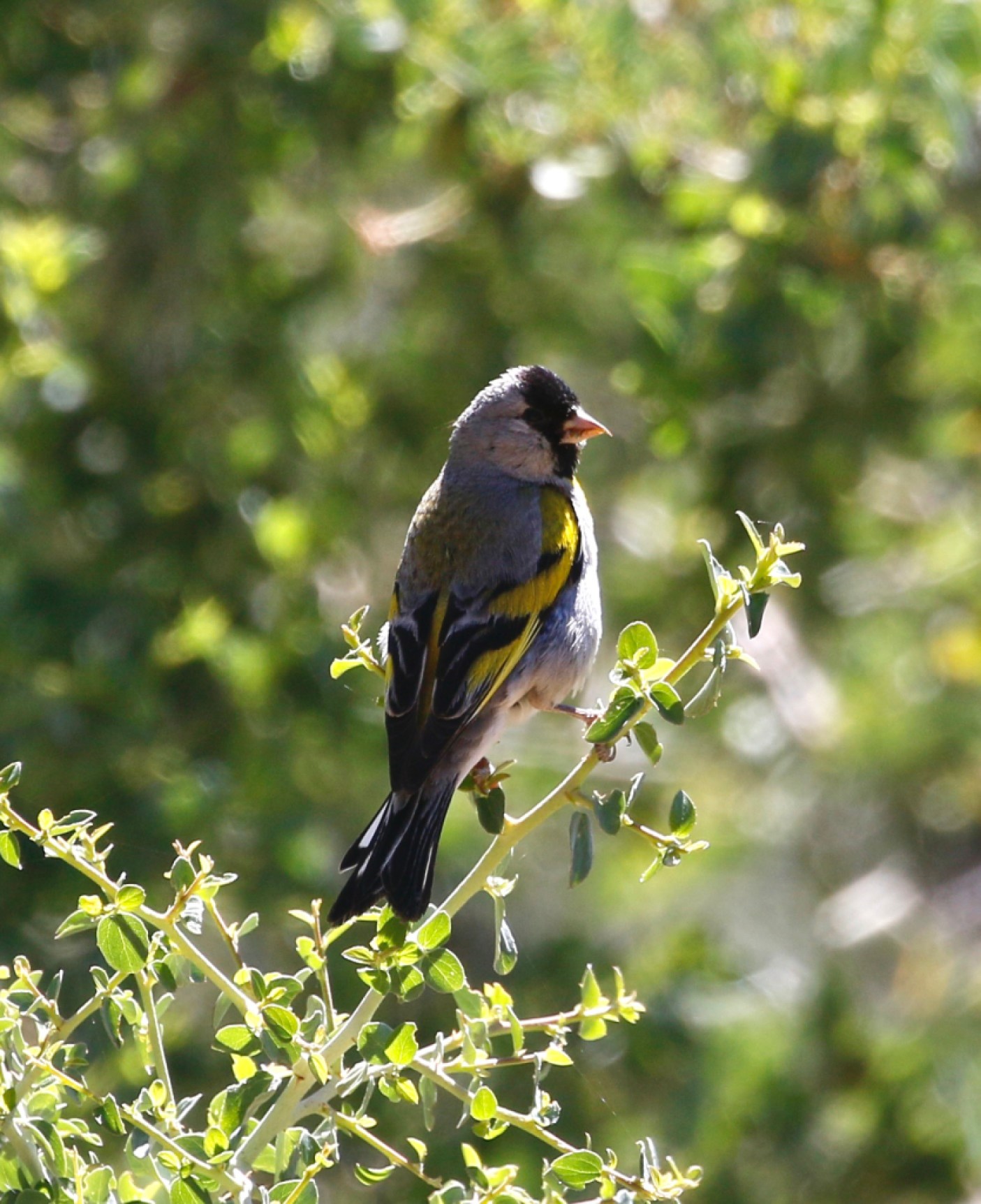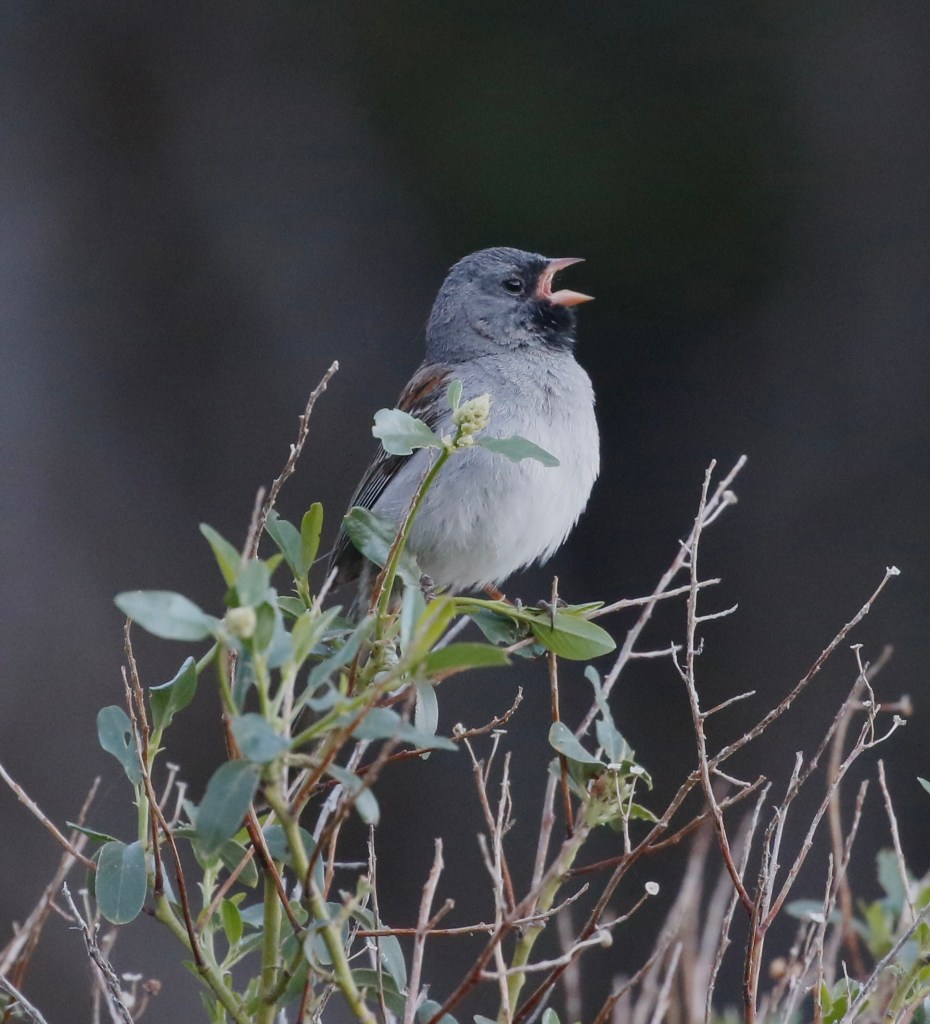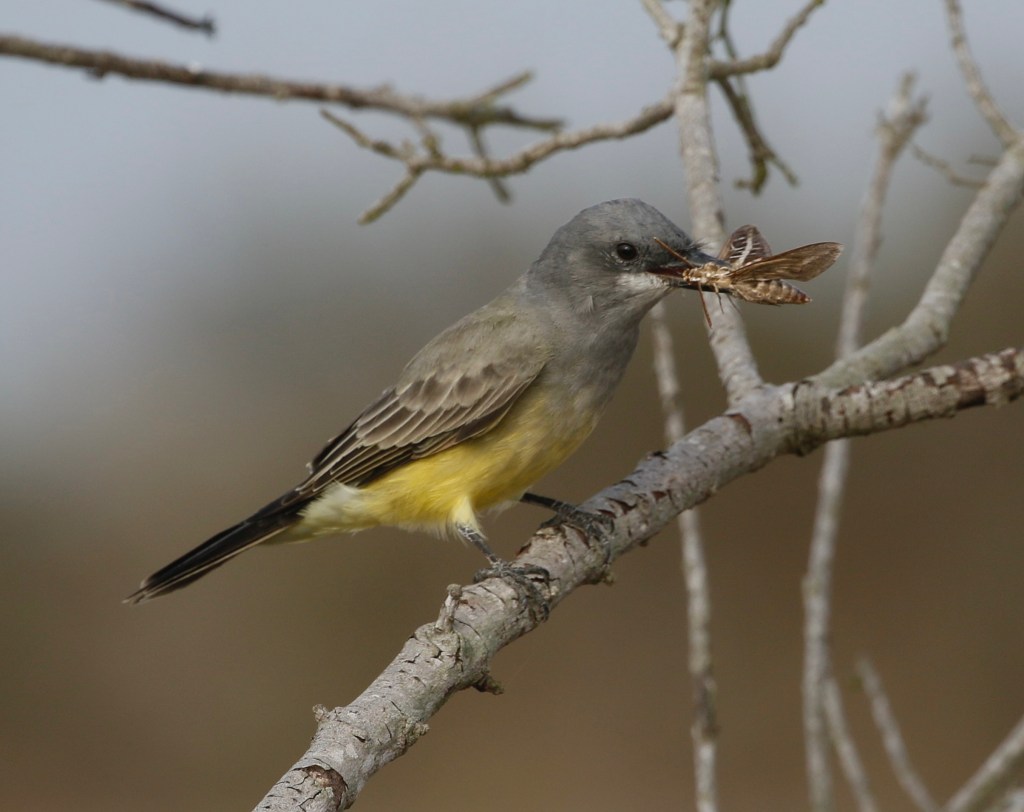Go Native
Planting Native Can Help Reverse Insect and Bird Declines in Santa Barbara

Planting Native Can Help Reverse Insect and Bird Declines in Santa Barbara

As a naturalist, my first love was birds. I was smitten at the age of 12, and the love affair has only grown more passionate over the years. I have, however, broadened my interests over the last decade, first with the study of dragonflies, then butterflies and moths, and, lastly, bumblebees and other insects. Butterflies are inextricably tied to the plant hosts where they lay their eggs for the larva to feast upon, and so I’ve also learned quite a bit about our native plants.
This growing awareness of insects has led me to increase my interest in their status and distribution. After all, insects play a crucial role in the food chain; they are the sole food source for a variety of creatures, including many birds. Insects make up two-thirds of all the species on earth, and many are beneficial, not only pollinating wild plants but also the crops we depend upon.
“Insects are the food that make all the birds and make all the fish,” said entomologist David Wagner, who works at the University of Connecticut. “They’re the fabric tethering together every freshwater and terrestrial ecosystem across the planet.”
But insects are in real trouble, and that doesn’t bode well for the rest of the food chain. “Nature is just eroding away very slowly,” Wagner said. As insects disappear, “we’re losing the limbs and the twigs of the tree of life. We’re tearing it apart. And we’re leaving behind a very simplified and ugly tree.”

Around the world, numbers of insects are declining at a rate of 2 percent per year in what scientists call a “global insect apocalypse.” We have lost as many as 10 percent of insect species worldwide in the last 150 years. Insect loss has been well documented in Europe. In Germany, a recent study found that in the last quarter century, there has been a 75 percent decline in the flying insect biomass. The U.K. reports a similar decline.
Some insects are doing very well, but these are often the ones we consider pests. They tend to breed faster and have adapted to feed on human crops.
In the United States, nearly all songbirds feed insects to their young, but since 1970, the number of songbirds has decreased by 29 percent, which equates to about three billion birds. Scientists see a direct correlation between declining insects and bird populations.
What’s causing the crash of insect populations? The usual suspects are thought to be to blame: deforestation, climate change (the drying of wetlands is catastrophic), pesticide use, and artificial light pollution.
The introduction of non-native plants has also had a detrimental effect. Many insects have evolved to utilize a single plant species, and if this plant population is disrupted, the insects that depend upon them will suffer. Birders have noticed a seemingly contradictory effect in recent years, with migrating birds flocking to feed upon pests on non-native trees such as eucalyptus, and shunning the previously favored riparian areas. They are taking advantage of a novel food source, but could this partly be because native bugs have decreased?

With my newfound appreciation for native plants, I notice that as I walk around my neighborhood, most of the plants I see in lushly planted yards are non-natives. There are insects, of course, but many are introduced species, such as cabbage white butterflies and European honey bees. What’s to be done? Plant native!
At the small condo complex where I live, we had a good chunk of land lying fallow after an old oak had to be removed a few years ago. I had the idea to landscape the area with native plants, and I got enough votes to go ahead with the plan. I first met with Scot Pipkin, the director of education at the Santa Barbara Botanic Garden. He showed me around the garden and gave me ideas for plants that would be attractive both to humans and insects, with the added bonus of being drought-tolerant.
The next step was to put mulch down, both to control weeds and improve the soil. The city of Santa Barbara delivered two truckloads at a very reasonable price. I then bought lots of plants, some from the Botanic Garden and the rest from Manzanita Nursery in Solvang, a remarkable business that sells only native plants and has a huge variety from which to choose. So far, I’ve planted lemonade berry, toyon, bladderpod, coffeeberry, Catalina currant, canyon sunflower, California fuchsia, and a variety of sages and buckwheats. The cost of the mulch and the plants came to less than $300. I watered them a little to get them going, but after the recent rains, they are becoming well-established and should need very little maintenance beyond pruning.
My hope is that the native garden will soon begin to attract native insects and that the birds will follow. There is hope. We can start to reverse the damage we’ve caused one small step at a time.

The next Santa Barbara Audubon Society program is Documenting Nature: Film Clips from Green Screen and the Coastal Media Project. Chris Jenkins will present “a curated selection of film clips by talented UCSB student filmmakers telling vital and timely stories about our local environment.” It takes place on Tuesday, February 20, at 7:30 p.m. in the Farrand Auditorium of the Santa Barbara Museum of Natural History. For more information, see sbnature.org.
Hugh Ranson is a member of Santa Barbara Audubon Society, a nonprofit organization that protects area birdlife and habitat and connects people with birds through education, conservation, and science. For more information, see santabarbaraaudubon.org.
Thu, May 02 5:00 PM
Santa Barbara
Sat, May 04 10:00 AM
Lompoc
Thu, May 02 5:00 PM
Santa Barbara
Thu, May 02 5:00 PM
Santa Barbara
Fri, May 03 4:00 PM
Santa Barbara
Fri, May 03 8:00 PM
Santa barbara
Sat, May 04 10:00 AM
Solvang
Sat, May 04 11:00 AM
Santa Barbara
Sat, May 04 11:00 AM
Santa Barbara
Sat, May 04 3:00 PM
Solvang
Sat, May 04 7:00 PM
Santa Barbara
Tue, May 07 7:00 PM
Santa Barbara
Please note this login is to submit events or press releases. Use this page here to login for your Independent subscription
Not a member? Sign up here.
You must be logged in to post a comment.